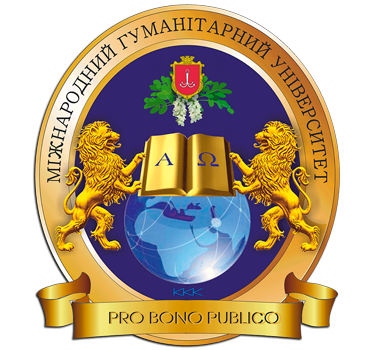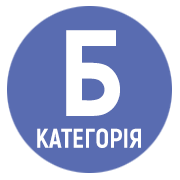COMPARATIVE ANALYSIS OF SELECTED METHODS OF ANESTHESIA FOR THE COGNITIVE STATE OF PATIENTS WITH OPHTHALMIC SURGERY
DOI:
https://doi.org/10.31379/2411.2616.17.1.8Keywords:
postoperative cognitive dysfunction, Dexmedetomidine, scale MMSE, scale FAB, nerve blocks in the pterygopalatine fossa.Abstract
In order to optimize the choice of method of anesthesia, a comparison of changes in cognitive functions in the postoperative period was made. The study was conducted on the basis of KP «DOKOL». 91 patients were examined after surgery for end-toend keratoplasty aged 18 to 60 years. The study of cognitive status was performed using neuropsychological testing: mental status assessment scale (MMSE), frontal dysfunction scale (FAB) and Luria test. Testing was performed before surgery and 6 hours, 24 hours, 7 days and 21 days after surgery. Patients were randomized into three groups. The first group – group b (n1 = 28) included patients who received a combination of general anesthesia with blockade of the pterygopalatine fossa. In group d (n2 = 32), dexmeditomedin was used to sedate and potentiate the effects of narcotic analgesics. In this premedication group, Sibazon 0.5% and Fentanyl 0.005% were removed, thus the effect of benzodiazepine drugs was excluded and an attempt was made to reduce the number of narcotic analgesics used. In the next group db (n3 = 31) the use of regional anesthesia was combined with infusion of dexmedetomidine before surgery. The aim of this combination was to eliminate the effect of benzodiazepines on the patient’s cognitive state in the postoperative period, as well as to reduce the number of narcotic analgesics not only due to the possibility of dexmedetomidine to potentiate their action, but also using the analgesic effect of regional anesthesia in the intraoperative and postoperative period. All clinical groups were statistically comparable (p> 0.05) in age and sex characteristics. During the study a comparative analysis of changes in glycemia, intraoperative sedation and analgesia. In the db group, the lowest number of narcotic analgesics was used, compared to other groups, while maintaining the levels of sedation and analgesia, which did not differ significantly from other groups (p <0.001). All clinical groups were statistically comparable (p> 0.05) in age and sex characteristics. During the study, a comparative analysis of changes in glycemia, intraoperative sedation and analgesia. In the db group, the lowest number of narcotic analgesics was used, compared to other groups, while maintaining the levels of sedation and analgesia, which did not differ significantly from other groups (p <0.001). Evaluation of the mean (Me) score of cognitive functions in groups on the MMSE scale at different stages of the study leads to the conclusion that when comparing the results at stage 1 and 6 hours after surgery, the largest changes were observed in group b – a decrease in cognitive function 5 points (20.8%), in group d and db – 3 points (12%). When conducting a comparative analysis on the MMSE scale, we note a tendency to less prolonged and pronounced reductions in the combination of regional anesthesia and preoperative infusion of dexmedetomidine. When evaluated by the FAB scale in group b, the mean scores reached baseline less than a week after the intervention, with an increase relative to baseline in 82.1% of patients on day 21 of follow-up. In group d, the improvement of the result relative to the initial level was observed in 68.7%, the results remained below the initial level in 3.2%, in 28.1% the cognitive state was restored to the initial level. In the db group, the state of the CNS was restored to the initial level by 21 days in 32.3%, the improvement of the result for the initial level was noted in 67.7%. Comparison of the results of changes in short-term verbal memory on the Luria test in group b showed a decrease in reduced rates after 21 days after surgery in only 2 elderly patients (7.1%) (p <0.05). While in group d only 9.4% (n =3) remained below normal, in group db the improvement of the initial result was observed in 48.4%. After a comparative analysis of the effect of these methods of anesthesia on the cognitive state of patients after surgery, end-to-end keratoplasty, we concluded that the combination of regional anesthesia (blockade of the pterygopalatine fossa) and infusion of dexmedetomidine 0.3 mg/kg with general anesthesia mixture) with the exception of Sibazon 0.05% cause the least long-term and pronounced effect on the cognitive state (p < 0,05).
References
Safavynia S.A., Goldstein P.A. (2019) The Role of Neuroinflammation in Postoperative Cognitive Dysfunction: Moving From Hypothesisto Treatment. Front. Psychiatry 9:752. DOI: 10.3389/fpsyt.2018.00752
Авезов А.М., Пантелеева М.В., Князев А.В. и соавт. Когнитивная дисфункция и общая анестезия: от патогенеза к профилактике и коррекции. Неврология, психиатрия, психосоматика.2016.№ 3.С. 101-105].
Melanie Varin,Marie-Jeanne Keroat, Sylvie Belleville. Age–Related Eye Desease and Cognitive Function. Ophtalmology. Оctober 09, 2019.
Berger M., Terrando N., Smith S.K., etal. Neurocognitive function after cardiac surgery: from phenotype sto mechanisms. Anesthesiology. 2018.
Акименко Т.И., Женило В.М., Здирук С.В., Александрович Ю.С. Снижение частоты после операционных когнитивных нарушений после ампутации матки при ингаляционной
анестезии севофлураном. Альманах клинической медицины. 2018. 46(7). 699-707.
Nalini Kotekar, Anshul Shenkar, Ravishankar Nagaraj, Postoperative cognitive dysfunction – current preventive strategies.ClinInterv Aging. 2018. 13.2267–2273. Publishedonline 2018 Nov 8.doi:10.2147/CIA.S133896
КоберскаяН.Н, ТабееваГ.Р. Современная концепция когнитивного резерва. Неврология, нейропсихиатрия, психосоматика. 2019.11(1).96–102.
Криштафор А.А., Йовенко И.А., Черненко В.Г., Клименко К.А., Криштафор Д.А. Особенностикогнитивных нарушений при ранениях, полученных в условиях боевых действий. Медицинанеотложных состояний.2018 .№2 (81). http://dx.doi.org/10.22141/2224-0586.2.81.2017.99701
Ayvardgi A.A, Kobeliatskyy Yu.Yu. ANI-monitoring in assessing the effectiveness of the anesthetic management for plastic surgery of the nose. Emergency medicine. 2018. №1(88). P. 103-107. DOI: 10.22141/2224-0586.1.88.2018.124975
Антомонов М.Ю. Математическая обработка и анализ медико-биологических данных. Киев. 2017. 578 с.






